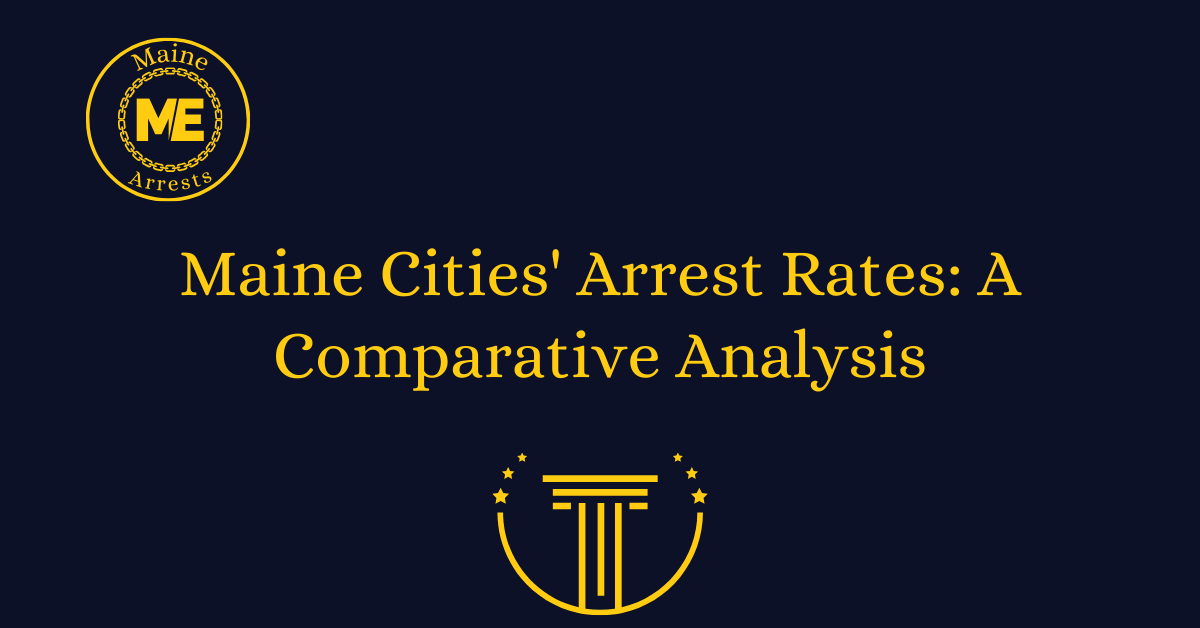Maine Cities’ Arrest Rates: A Comparative Analysis
Maine, known for its picturesque landscapes and vibrant communities, is also home to various cities with distinct characteristics and demographics. One aspect that sheds light on the societal dynamics within these cities is their arrest rates. Arrest rates provide valuable insights into law enforcement practices, crime prevalence, and community dynamics. In this article, we will conduct a comparative analysis of arrest rates across several key cities in Maine, aiming to understand the factors influencing these rates and their implications for public safety and community well-being.
Portland: The Urban Hub
As Maine’s largest city, Portland serves as the state’s economic and cultural epicentre. With a diverse population and bustling urban life, Portland experiences a relatively higher volume of arrests compared to its counterparts. The city’s vibrant nightlife, influx of tourists, and socio-economic disparities contribute to its higher arrest rates. Law enforcement agencies in Portland often grapple with issues such as substance abuse, property crimes, and disturbances related to the transient population.
Bangor: Balancing Urbanism and Rural Charm
Nestled along the Penobscot River, Bangor strikes a balance between urban amenities and rural charm. Despite its smaller population compared to Portland, Bangor faces its share of law enforcement challenges. Substance abuse, particularly opioid addiction, remains a pressing issue in the region, impacting arrest rates significantly. Additionally, Bangor’s status as a regional hub for healthcare and education brings forth unique policing demands, including managing large-scale events and addressing transient populations.
Lewiston: Diversity and Socio-Economic Dynamics
Lewiston, characterized by its rich immigrant history and cultural diversity, presents a distinct profile in terms of arrest rates. While the city grapples with socio-economic disparities and urban challenges similar to Portland and Bangor, its immigrant population adds a layer of complexity to law enforcement efforts. Issues such as language barriers, cultural differences, and integration challenges can influence arrest rates within immigrant communities. Community policing initiatives and outreach programs play a crucial role in addressing these dynamics and fostering trust between law enforcement agencies and residents.
Augusta: Navigating Capital City Dynamics
As the capital of Maine, Augusta embodies the political and administrative heart of the state. Despite its relatively smaller size compared to other major cities, Augusta faces unique law enforcement challenges associated with its status. Political demonstrations, government-related events, and administrative functions contribute to the city’s policing demands. Moreover, socio-economic disparities within the capital city’s outskirts can influence arrest rates, highlighting the importance of targeted intervention strategies and community engagement efforts.
FAQS
What is the purpose of the Maine Cities’ Arrest Rates: A Comparative Analysis?
The purpose of the Maine Cities’ Arrest Rates: A Comparative Analysis is to provide a comprehensive overview of the arrest rates in different cities across Maine. This analysis aims to highlight any variations in arrest rates and identify potential factors that contribute to these differences.
Which cities in Maine are included in the analysis?
This analysis includes a wide range of cities in Maine, such as Portland, Bangor, Lewiston, Augusta, and others. The selection of cities ensures a representative sample to compare arrest rates across different regions of the state.
What factors are considered in the comparative analysis?
The comparative analysis takes into account various factors that might influence arrest rates, such as population density, crime rates, socioeconomic indicators, and law enforcement resources. By considering these factors, we aim to provide a comprehensive understanding of the arrest rates in Maine cities.
How were the arrest rates obtained for each city?
The arrest rates for each city were obtained from official law enforcement agencies and publicly available data sources. We have made efforts to ensure the accuracy and reliability of the data used in this analysis.
What are the potential implications of the comparative analysis?
The comparative analysis can provide valuable insights for policymakers, law enforcement agencies, and communities in Maine. By understanding the variations in arrest rates, stakeholders can identify areas for improvement, allocate resources effectively, and develop targeted strategies to address crime and enhance public safety.
Can I use the information from this analysis for my research or academic purposes?
Yes, you can use the information from this analysis for your research or academic purposes. However, we kindly request that you properly cite the source and acknowledge the Maine Cities’ Arrest Rates: A Comparative Analysis as a reference.







